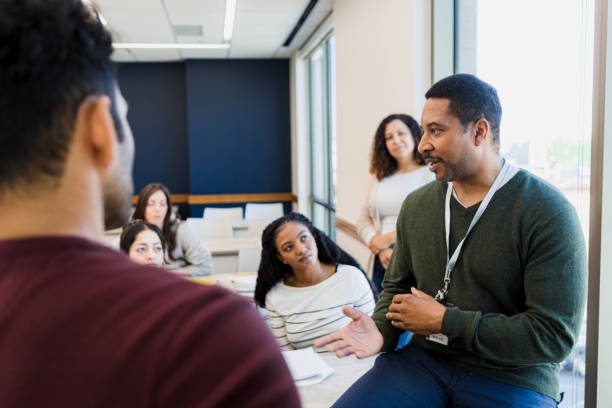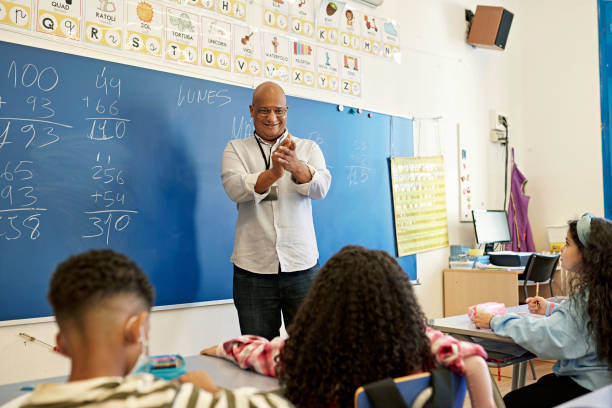The Roles of a Teacher. The fundamental Roles of a Teacher has not altered over time. Teachers continue to direct students toward fresh material. However, if you consider teaching a profession rather than a craft, you will begin to understand the complexity of a teacher’s job.
A teacher’s responsibilities extend beyond the centuries-old tactic of expecting students to follow their lead. Now, teachers are expected to provide pupils with rich, distinctive, and individualized learning experiences.
No longer is education restricted to the classroom setting. It occurs at home, in the community, and throughout the digital and physical environment. No longer are books and traditional instructional materials the only sources of information; information is dispersed everywhere.
When seeking instructors nowadays, school officials and companies must take a different approach. Continue reading to learn about the job of a teacher in contemporary schools and how to locate the best educators for your institution.
Why has the teaching profession evolved?
Historically, the school structure saw students as consumers of information. In this approach of education, teachers distributed information and enforced discipline. They were compensated for keeping youngsters of the same age attentive and responsive to the traditional curriculum, which consisted of lessons and assessments.
This paradigm did not provide teachers any control over what they taught or how they taught it. All students were required to be trained in the same manner, and failure to learn was not the teacher’s fault. Schools strictly enforced conformity to the specified methods of instruction, and regulators banned deviation from conventional practices.
This model likewise portrayed pupils as blank canvases, and teachers judged students’ development only in accordance with the requirements of the conventional curriculum. All students were obliged to learn the same manner, and imaginative thought was discouraged.
Today, school managers have begun to recognize the varied learning potential of each student under their supervision. Administrators increasingly recognize that children are intended to be active knowledge producers as opposed to passive knowledge consumers. Schools should be conduits for lifelong learning, enhancing students’ capacity to generate and absorb lessons from the world.
Massive advancements in information technology and knowledge access, particularly via the Internet, have accelerated these shifts in the education model. Consequently, parents and society today expect more healthful learning models, compelling schools across the nation to reform their teaching strategies.
Thousands of existing teachers who have altered every element of their careers are at the forefront. New approaches and tools, as well as shifting responsibilities and expectations, have sped up the speed of professional reforms. As a result, instructors have had to reinvent themselves, and as an employer, you should look for more than just teaching expertise in new teachers.
What is the role of a teacher?
The role of a teacher is to aid students in their quest for new information on a predetermined set of topics. This applies to pupils of all ages, from pre-kindergarten to post-graduate.
However, teachers should not limit themselves to merely being classroom instructors in the school context, just as students are not simply empty minds awaiting instruction. Instead, a teacher is responsible for contributing to the development of their students and bringing the school curriculum to life. The lives and career decisions of their students can be dramatically influenced by the teachers they have.
The basic roles of a teacher are:
1. Offering guidance

One of the Roles of a Teacher is offering guidance. There is a direct correlation between a concerned and informed instructor and a confident and motivated student. Students need to know that their teachers care about how they learn and the factors that aid or hinder the process.
Teachers must endeavor to understand the distinguishing qualities of each student, such as their social, economic, and cultural background, individual learning styles, needs, aptitudes, interests, and aptitudes.
It is now the responsibility of the educator to nurture and guide students and assist them in making sense of their intellectual, emotional, and social requirements. Developing a grounded and emotionally mature learner facilitates academic success by enabling students to make better judgments and digest more information.
2. Motivating students
Motivating students is another Roles of a Teacher. Teachers should be ready to act at any time to aid student learning. Instead of thinking of teachers as educators of specific disciplines, such as science, language, or math, you want them to be creative and foster a passion for learning in their students.
To accomplish this objective, teachers should be able to employ a variety of instructional strategies that cater to the learning styles and aptitudes of their pupils. For example, they should encourage students to actively participate in their education. You can find educators that accept unorthodox methods of instruction by asking the correct interview questions and paying attention to the responses.
3. fostering pupils’ healthy curiosity
The best teachers have perfected the skill of fostering in their students a healthy sense of curiosity. You should seek for applicants that can design lesson plans that incorporate a wide variety of activities to accommodate various learning styles and encourage student participation. The educator should view oneself as a facilitator, adviser, and co-learner in the classroom.
It is the job of the educator to motivate students to take charge of their learning journey. This is the result of engaging children’ innate curiosity rather than suppressing it. Look for applicants who can draw parallels between learning goals and lifelong value, and create evaluations that quantify real successes rather than the ability to memorize content. This is Roles of a Teacher.
4. Creating educationally significant opportunities

If they have input on the structure and content of their program, students will be more cooperative. Teachers can direct students in the creation of learning plans to attain their objectives. They can also assist pupils determine how to demonstrate their learning.
Consider avoiding the employment of lecturers who see themselves as all-knowing. You require a teaching staff that can construct interesting learning opportunities using multiple media formats. It is the teacher’s responsibility to construct and curate experiences that enable pupils to tackle real-world problems.
These experiences provide context for the theoretical concepts covered in class. In addition, they provide opportunity for students to cultivate skills and mental and physical habits that will assist them in attaining their educational objectives.
Consequently, pupils no longer need to recall abstract information from out-of-date textbooks. Now, they may apply their acquired knowledge to real-world problems and actively participate in sharing this knowledge to other students.This is also among the Roles of a Teacher.
5. Using technology to support education
Utilizing technology to support education is also one of the crucial Roles of a Teacher. Every element of life has been altered by technological advancements, and education must reflect these changes in order to prepare kids for life after school. Less information necessitated the use of the previous mode of instruction. To concurrently instruct a big group, teachers immersed themselves in the content.
Now, information from numerous sources is abundant. Modern teaching objectives should focus on assisting students in analyzing information, thinking critically, solving issues, querying information sources, and making informed judgments.
As a result of these improvements, teachers will be able to spend more time working in small groups or one-on-one with pupils to attain these objectives. Training can also assist educators in comprehending how to employ technology and equipment to educate students.
6. Mediating and negotiating
Educators must frequently act as liaisons and mediators amongst the numerous stakeholders in the education ecosystem. For instance, kids may seek teachers for assistance communicating vital information to their parents or vice versa.
Similarly, when school boards and parents disagree on school rules or strategic decisions, teachers can provide significant insight. Working directly with both administrators and parents, they are well-positioned to serve as mediators and advocate for the best interests of students. Teachers can intervene in the classroom to address problems between students or when school policies have been broken.
Before recruiting a candidate, it is essential to inquire about their stance on essential school policies. Asking candidates about how they would manage a variety of scenarios provides insight into their capacity to mediate and collaborate on the job.It is also another Roles of a Teacher.
7. Investigating instructional methods

Investigating instructional methods is also another Roles of a Teacher. Teachers must devote effort to staying abreast of changes that have an impact on education or learning. Even in their areas of expertise, teachers must constantly update their knowledge because the world is changing rapidly. The vast quantity of knowledge on all topics accelerates study and discoveries.
Teachers should not be caught off guard by the world’s progression and continue to teach outmoded ideas. Teachers might be aided by research in appreciating the many learning dynamics present in the contemporary educational setting. Armed with these insights, they can invest time mentoring new instructors to prepare them for the complexities of the contemporary learning environment.
FAQs On Roles of a Teacher
What is the most important role of a teacher?
Dedication. One of the most important parts of teaching is having dedication. Teachers not only listen, but also coach and mentor their students. They are able to help shape academic goals and are dedicated to getting their students to achieve them.
What are the multiple roles of a teacher?
While teaching itself is so multi-faceted, with the several roles of organizer, manager, material developer, friend, learning facilitator, mentor, role model, all rolled into one – the larger perception of what teachers are has been a limited one.
What is the role of the teacher according to Dewey?
According to Dewey, teachers have a responsibility to structure educational environments in ways that promote educative learning experiences, those that change the learner in such a way as to promote continued learning and growth.
see also
- 22 Jobs for Teachers Outside of the Classroom
- 9 Tips for Managing Teachers Stress &; Fatigue
- Becoming a Music Teacher: Skills, Education and how to become one in 5 easy steps
- Best 20 teacher apps in 2022
- The Top 25 Skills Needed to Be a Teacher
- Is it Worth it to be a Teacher? &; 8 Benefits of Teaching as an Occupation

